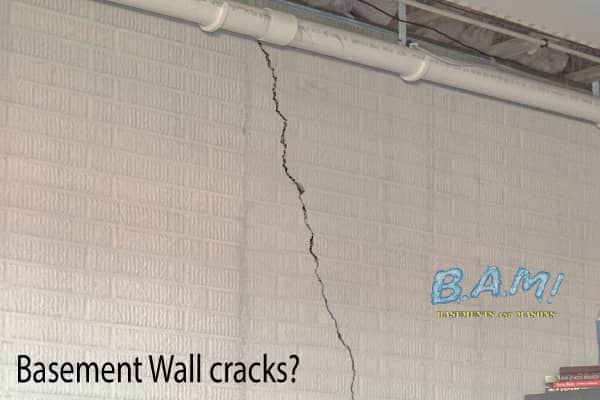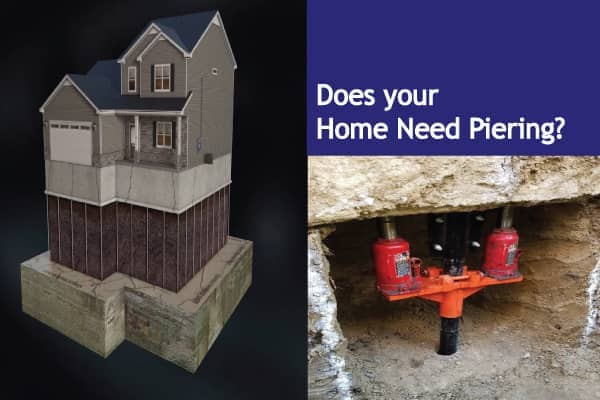Not known Details About Best Basement Waterproofing
Not known Details About Best Basement Waterproofing
Blog Article
A Biased View of Best Basement Waterproofing
Table of ContentsThe smart Trick of Best Basement Waterproofing That Nobody is DiscussingThings about Best Basement WaterproofingBest Basement Waterproofing Things To Know Before You Get ThisThe Only Guide for Best Basement WaterproofingThe 8-Minute Rule for Best Basement Waterproofing
AdvantaClean's qualified experts and specialists will locate the water source. If wall or slab splits are present, we will infuse polyurethane and epoxies into the fractures and seal the concession, preventing additional moisture from going into.
If there's condensation on the outside of the foil, you have high moisture in your basement. If the foil has condensation on the within surface area (next to the wall surface), the soil around your home may be normally damp from a high water table or bad soil drainage.
You can waterproof just your indoor walls, which might resolve the issue. Or you can waterproof your exterior wall surfaces, which is a much better wager but more costly. Here's the inside story on the various types: These thick finishes are cement-like. Once they dry, they adhere permanently to concrete and stonework wall surfaces (Best Basement Waterproofing).
Indicators on Best Basement Waterproofing You Should Know
Concrete waterproof coatings can not be applied to previously painted surfaces; examine the tag. Understood as densifiers, they are ideal only for walls that haven't been painted or sealed.
But you brush, roll, or spray it on much more thickly one gallon covers simply 75 square feet, not the 300 square feet regular with typical paint. Water-proof paint is great for DIY application. You can apply it over painted surface areas, and paint over it once it's cured (one gallon expenses $37).
It can set you back $10,000 to $15,000, depending on the work required. Outside waterproofing includes excavating all around the residence to the full depth of the structure wall surfaces, after that mounting a water-proof finish or membrane layer topped by drain panels.
We have actually all been caught in a tornado without umbrella or raincoat (Best Basement Waterproofing). And it's constantly a recipe for calamity: everything's damp, get redirected here your hairdo is ruined, and things are getting mildewy. A cellar without waterproofing is kind of like that. Minus the spoiled hairstyle part. Your cellar doesn't wish to experience a rainstorm without appropriate defense simply as high as you don't wish to.
Things about Best Basement Waterproofing
But if you have actually done your research study, you 'd understand there are two kinds of waterproofing: inside and outside. It can obtain perplexing what they both mean, which one's a far better investment, and what will actually keep the water out. Do not stress, we created this blog site to quickly specify both techniques for you and go over the benefits and drawbacks of each.
Outside waterproofing is a waterproofing technique that entails sealing your home from the outside. The structure wall surfaces are then cleansed, sealed, and covered with a waterproof membrane layer or sealer.

The Buzz on Best Basement Waterproofing
It's a much more engaged procedure that calls for excavating up your yard, which is costly and lengthy. Outside waterproofing entails eliminating every little thing surrounding your house, including decks, driveways, sidewalks, landscaping, air conditioner units, decks, and so forth. If any one of the job was done improperly and water is still entering your cellar, there isn't much you can do to remedy or fix it.
Inside basement waterproofing involves waterproofing from the inside. Any kind of water that leakages into your cellar is rerouted before it touches your floor. It's kind of like putting on a raincoat under your clothes. click It involves two points: a water drain track and a sump pump. It works by sealing the inside like this of your basement walls and floorings so water that attempts to get in is channeled out with a sump pump.
It's an efficient approach to waterproof your cellar. The disadvantage of indoor cellar waterproofing primarily has to do with the installation procedure.
The 7-Minute Rule for Best Basement Waterproofing
Finally, outside and indoor basement waterproofing are both reliable methods of shielding your home from water damage. Exterior waterproofing develops a barrier that stops water from entering your home, while indoor waterproofing reroutes water that does enter your home. And it is necessary to note that outside waterproofing is an expensive and turbulent installation procedure when compared to indoor waterproofing.
Whichever approach you pick, make certain you select a dependable and reliable professional for the job. Both techniques need seasoned workers to deal with the job. If you have any questions regarding cellar waterproofing, please connect to us. And if you're in our service location and have water in your cellar, call us for a cost-free, no-obligation home inspection.
You can fill in our kind right here, start a conversation in the bottom right-hand edge, or call us at 1-800-827-0702.
Report this page